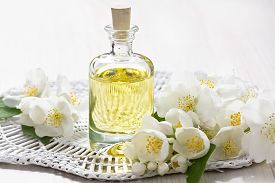Birch Sweet - Betula lenta










Birch Sweet - Betula lenta
Family: Betulaceae
Synonyms: B. capinefolia, cherry birch, southern birch, mahogany birch, mountain mahogany.
General Description: A graceful tree about 25 meters high which has a pyramidal shape while young. It has bright green leaves and a dark reddish-brown aromatic bark, which is broken into plates or patches.
Distribution: Native to Southern Canada and south-eastern USA; produced mainly in Pennsylvania.
Other Species: There are numerous species of birch, spanning several continents, such as black birch (B. nigra) found in North America. Not to be confused with the European white birch (B.alba) which produces birch tar oil used in chronic skin diseases.
Herbal and Folklore Tradition: The cambium (the layer directly under the bark) is eaten in the spring, cut into strips like vermicelli. The bark, in form of an in fusion, is used as a general stimulant and to promote sweating.
As a decoction or syrup, it is used as a tonic for dysentery and is said to be useful in genito-urinary irritation. The flavour of wintergreen and birch bark, in the form of tea, was popular with the American Indians and European settlers. More recently, this has been translated into a preference for 'root beer' flavourings.
Actions: Analgesic, anti-inflammatory, antipyretic, antirheumatic, antiseptic, astringent, depurative, diuretic, rubefacient, tonic.
Extraction: Essential oil by steam distillation of the bark macerated in warm water.
Characteristics: Colourless, pale yellow or reddish tinted liquid with an intense, sweet woody, wintergreen-like scent.
Principal Constituents: Almost entirely methyl salicylate (98 per cent), produced during the maceration process. It is almost identical in composition to wintergreen oil.
Safety Data: Methyl salicylate, the major constituent, is not exactly toxic but very harmful in concentration. It can be absorbed through the skin, and fatal poisoning via this route has been reported.' It is also classed as an environmental hazard or marine pollutant.
Aromatherapy/Home Use : None.
Other Uses: Limited use as a counter-irritant in antiarthritic and antineuralgic ointments and analgesic balms. Limited use as a fragrance component in cosmetics and perfumes; extensively used as a flavouring agent, especially 'root beer', chewing gum, toothpaste, etc, (usually very low level use).
Reference: The Encyclopedia Of Essential Oils: Julia Lawless
Articles Latest
- CARDAMON
- CARAWAY
- CANANGA
- CAMPHOR
- CALAMUS
- Calamintha-Calamintha officinalis
- CAJEPUT- Melaleuca cajeputi
- Plant Expression
- Molecular Target: Cell Membrane
- CADE Essential Oil
- CABREUVA
- The Kashmiri rose oil worth millions
- Agarwood: The natural treasure worth more than gold whose heady scent is driving it towards extinction
- Nonselective Binding to Proteins: The Science of Advanced Aromatherapy
- Molecular Target: DNA, RNA, and Gene Expression
- BUCHU - Agothosma betulina
- BROOM - SPANISH - spartium junceum
- BORONiA - Boronia megastigma
- BORNEOL - Dryobalanops aromantica
- Boldo Leaf - Peumus boldus
- Birch White-Betula Alba
Articles-Most Read
- Home
- Balsam Canadian - Abies balsamea
- Copaiba Essential Oil
- Balsam Peru
- Basil French - Ocimum basilicum
- North America: Tea Tree and Monarda-3
- Basil Exotic
- North America: Tea Tree and Monarda-2
- Exploring Transcultural Constants
- Thyme Essential Oil
- Balsam Tolu
- Palma Rosa
- The Bioactivity of Essential Oils
- Benzoin - Styrax benzoin
- Why Pharmacology Cannot Demonstrate Essential Oil Efficacy
- Bay - West Indian - Pimenta racemosa
- Exploring Essential Oil Activity The Conventional Way
- Aromatherapy: An Answer
- Complex information From Plants
- Contacts
